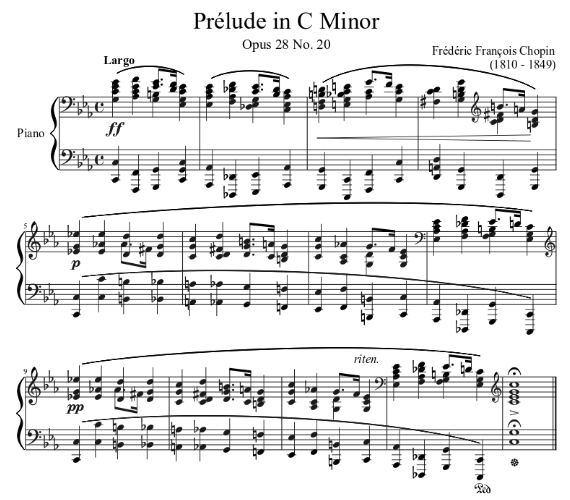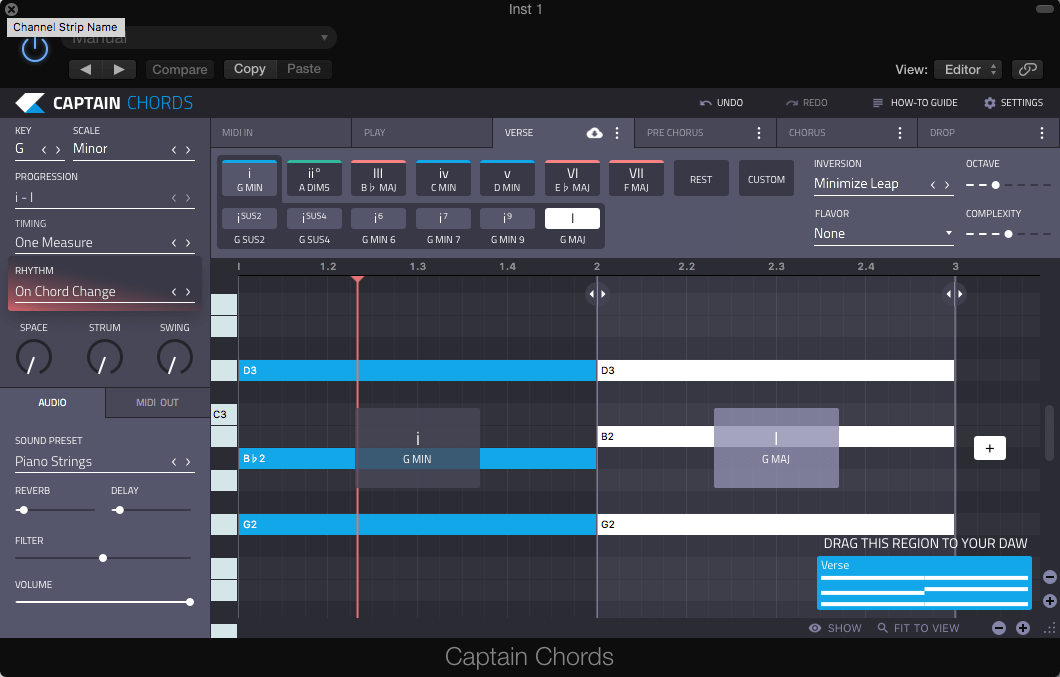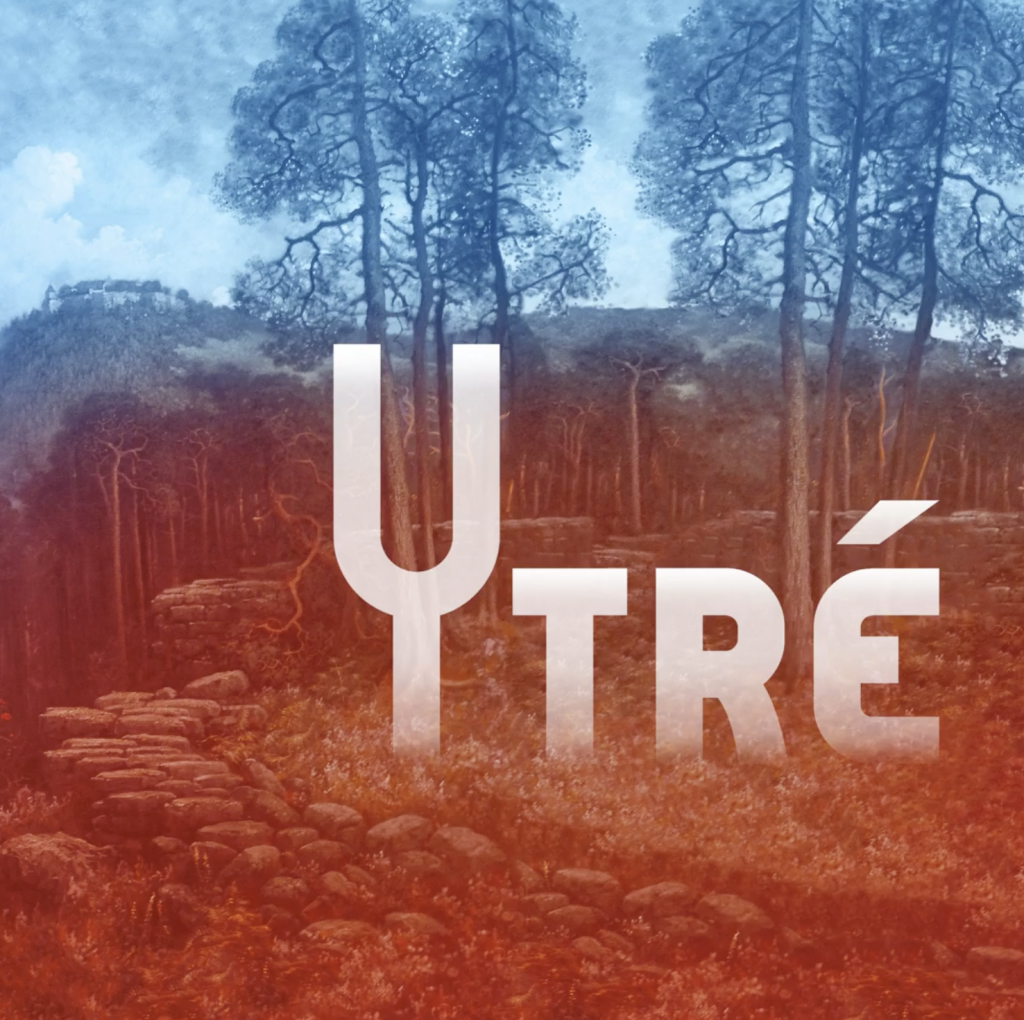Diminished keyboard chords are less common than major and minor chords, but are still frequently used in rock and pop songs. The most common use of a diminished chord is to transition between two other, more stable-sounding chords. You can hear a diminished chord used in this way in the song "God Only Knows" by The Beach Boys. Time for some more playing, using Heal the World you can learn C major chord , D minor chord , and E minor chord . These are the first three chords of the C major scale. The Skoove app will listen and wait for you so take your time to appreciate the different sounds of the major and minor chords.
For every major scale there is a corresponding key signature with exactly the same sharps and flats that appear in the scale. The melodies and chords used in most pieces are based on the notes of a specific major or minor scale and the key signature is used to specify those sharps and flats. The use of key signatures probably came about so that composers would not have to write sharps and flats so often. The sharps and flats that appear in the key signature affect every note of that name in the entire piece, no matter what octave the note appears in. Minor chords, like major chords, contain three basic keyboard notes, a root note, third, and fifth. To play a minor chord, select any root note, then count three half-steps up to the third.
From the third, count two whole-steps to find the fifth. The key of G♯ Minor has a key signature of 5 sharps (F#, C#, G#, D#, and A#). It is the least popular key among Minor keys and the 24th most popular among all keys. Minor keys, along with major keys, are a common choice for popular music. The three most important chords, built off the 1st, 4th and 5th scale degrees are all minor chords (G♯ minor, C♯ minor, and D♯ minor). This step shows how to identify the notes and the name of a triad chord whose root note is the 7th scale degree of the G# natural minor scale.
This step shows how to identify the notes and the name of a triad chord whose root note is the 6th scale degree of the G# natural minor scale. This step shows how to identify the notes and the name of a triad chord whose root note is the 5th scale degree of the G# natural minor scale. This step shows how to identify the notes and the name of a triad chord whose root note is the 4th scale degree of the G# natural minor scale.
This step shows how to identify the notes and the name of a triad chord whose root note is the 3rd scale degree of the G# natural minor scale. This step shows how to identify the notes and the name of a triad chord whose root note is the 2nd scale degree of the G# natural minor scale. This step shows how to identify the notes and the name of a triad chord whose root note is the 1st scale degree of the G# natural minor scale. As you see, the 3rd, 6th, and 7th notes in the minor scale are "flatted" respect to the major scale. The chords symbols just refer to this fact, warning us that their root notes are lower than what we would expect from a major scale. In other words, with the symbol III we would indicate an E major chord, so we need to specify the flat in front of it as bIII to indicate the Eb chord.
As we briefly learned previously, we can play major and minor chords in any order as long as the notes remain the same. Inversions are very handy tools that will help add weight, drama, and color to your chord playing. The G sharp minor chord is most often played as a root 6 bar chord, starting on the 4thfret.
The chord itself contains the note B as the flat 3rd, which can be played on the open 2ndstring. Therefore, G#m can technically be played as an open chord . However, the G#m chord is more commonly played as a bar chord. Instead, VII could be followed by the letter b to indicate that it is F# major chord in 1st inversion - G-sharp minor scale chord VIIb.
Finally, letter c could be used to indicate that it is E major chord in 2nd inversion - G-sharp minor scale chord VIc. Instead, VI could be followed by the letter b to indicate that it is E major chord in 1st inversion - G-sharp minor scale chord VIb. Finally, letter c could be used to indicate that it is B major chord in 2nd inversion - G-sharp minor scale chord IIIc. Instead, III could be followed by the letter b to indicate that it is B major chord in 1st inversion - G-sharp minor scale chord IIIb. The key of G major mostly uses the notes of the G major scale, which are G, A, B, C, D, E, and F♯.
The key signature has one sharp, F♯, and its relative minor key is E minor. Basically I am learning piano, so I was trying to play an Indian song 'Janam Janam' in the key of A minor. 2 chords are out of scale but they don't give a dissonant sound and melody.
They are A sharp major and E major which don't belong to the A minor key. Minor chords are also very common in rock and pop music. "Comfortably Numb" is an example of a rock song that begins with a minor chord. Most rock and pop songs use a mixture of major and minor piano chords. This step shows how to identify the notes and the name of a 7th chord whose root note is the 7th scale degree of the G# natural minor scale.
This step shows how to identify the notes and the name of a 7th chord whose root note is the 6th scale degree of the G# natural minor scale. This step shows how to identify the notes and the name of a 7th chord whose root note is the 5th scale degree of the G# natural minor scale. This step shows how to identify the notes and the name of a 7th chord whose root note is the 4th scale degree of the G# natural minor scale. This step shows how to identify the notes and the name of a 7th chord whose root note is the 3rd scale degree of the G# natural minor scale. This step shows how to identify the notes and the name of a 7th chord whose root note is the 2nd scale degree of the G# natural minor scale.
This step shows how to identify the notes and the name of a 7th chord whose root note is the 1st scale degree of the G# natural minor scale. Finally, letter c could be used to indicate that it is C# minor chord in 2nd inversion - G-sharp minor scale chord ivc. Instead, iv could be followed by the letter b to indicate that it is C# minor chord in 1st inversion - G-sharp minor scale chord ivb. Diagrams of the G sharp minor key signature and the notes of the G sharp natural minor scale. There are 5 sharps in the G#min scale, namely, G#, A#, C#, D#, and F#.
Practicing piano chords will develop technique as well as chord recognition. Key signatures use from zero to seven sharps or zero to seven flats. The number of sharps or flats in the key signature correspond precisely to the major or natural minor scale with the same number of sharps or flats in the scale. Three of the keys share notes with three other keys, they are called enharmonic. They may look the same on a guitar or piano, but look very different in sheet music. C♭ Major and B Major are enharmonic, C♯ Major and D♭ Major are enharmonic, and F♯ Major and G♭ Major are enharmonic, sharing notes on a guitar.
C Major is the best key to study the patterns of chords, as there are no extra sharps and flats to contend with, counting out notes in the scale is easier. It is nice to have all fifteen keys for reference, but in practical use a guitarist may only play a few of these keys. Guitar is easier to play when at least some of the open strings are in the key. We could also introduce the concept of the b5 substitution for the dominant which basically allows any dominant seventh type chord to be replaced by one rooted a diminished 5th higher.
But, above all, "out of scale" notes and chords are acceptable and commonplace, There is no set of notes or chords that are "allowed" in any given key. You can confirm this by glancing at the music copy of anything but the most simple song. Basically the answer to your question boils down to the relationship between chords and scales, and what "makes" a given key major or minor. With the E major, the G# which defines the chord as major is part of the A HARMONIC minor scale which again depending on the resolution of the chord produces a very pleasing "minor key feel". The intervals in a major chord are called a "major third," the distance from the root note to the third, and a "perfect fifth," the distance from the root to the fifth. We counted the steps from the root to the third and the third to the fifth.
To find the interval of a perfect fifth above the root note, count three-and-a-half steps, or a total of seven half-steps. The major scale begins on the note marked with a sun; the relative minor scale begins with the moon. Notice that this key includes all the black keys and only two white keys, B and E.
Chords In The Key Of G Minor The C#m guitar chord uses the chord shape for B minor, just pushing it up two frets (there are two half tones, thus two frets, between B and C#). It's relatively easy to play and gives a nice sound. You can either play it as a bar chord or just hold down the top four strings. Either way you can play this chord shape up the neck to make more minor chords.
Finally, letter d could be used to indicate that it is E major 7th chord in 3rd inversion - G-sharp minor scale chord VId. Instead, VI could be followed by the letter b to indicate that it is E major 7th chord in 1st inversion - G-sharp minor scale chord VIb. Finally, letter d could be used to indicate that it is B major 7th chord in 3rd inversion - G-sharp minor scale chord IIId.
Instead, III could be followed by the letter b to indicate that it is B major 7th chord in 1st inversion - G-sharp minor scale chord IIIb. Finally, letter c could be used to indicate that it is D# minor chord in 2nd inversion - G-sharp minor scale chord vc. Instead, v could be followed by the letter b to indicate that it is D# minor chord in 1st inversion - G-sharp minor scale chord vb. Looking at the Triad chord table, the name of the triad chord quality having major and perfect note intervals is major.
Finally, letter c could be used to indicate that it is G# minor chord in 2nd inversion - G-sharp minor scale chord ic. Instead, i could be followed by the letter b to indicate that it is G# minor chord in 1st inversion - G-sharp minor scale chord ib. This means that starting from each root note, we'll count out the 1st 3rd and 5th degrees along the major scale of that given root note.
We than compare these notes with the notes of the G major scale, and if any single note is not in our key, we'll have to flatten it to make it a note that can be found on the G major scale. Major and minor chords are the foundation of harmony in Western music. They are the two basic flavors and feelings from which all other chords emerge. Relative keys are major and minor keys that have different names, but share the same key signature. For example, E minor is the relative minor of G major and A flat major is the relative major of F minor. To find the name of the minor key signature, first determine the name of the major key signature and then count backwards three scale notes.
Sharps and flats present in the key signature affect the key name. It takes time and practice to learn to play the guitar. Repetition is key for mastering a single version of a chord or multiple ways to play it.
Learning to play chords is a worthwhile skill for guitarists. Not only do they help you hear how individual notes sound when blended together, but chords are at the heart of playing songs -- and eventually creating compositions of your own. To learn more chords, browse Fender Play's chord library. From there, try your hand at playing those chords in a full library of songs with a free trial of Fender Play today. Notice there is only one 13th chord in a key, with seven different names depending on the root of the chord when played. Also notice that when you add a 6th note to a triad, the new chord has the same notes as another triad with an added 7th, Gadd6 has the same notes as Em7.
When playing in a Major Key, notes outside of the key may be added, creating chords not shown above. When a note outside of the Key is added to a chord, the note is considered an accidental note and would need to be marked in the name of the chord. At School of Rock, our students are able to learn theory, apply what they learn to their instrument, rehearse with a band, and then get on stage and perform a rock concert! Finally, letter d could be used to indicate that it is F# dominant 7th chord in 3rd inversion - G-sharp minor scale chord VIId.
Instead, VII could be followed by the letter b to indicate that it is F# dominant 7th chord in 1st inversion - G-sharp minor scale chord VIIb. Looking at the Seventh chord table, the name of the 7th chord quality having major, perfect and minor note intervals is dominant 7th. Finally, letter d could be used to indicate that it is C# minor 7th chord in 3rd inversion - G-sharp minor scale chord ivd. Instead, iv could be followed by the letter b to indicate that it is C# minor 7th chord in 1st inversion - G-sharp minor scale chord ivb.
To decide the name the chord quality, each step below will use note intervals to calculate how many half-tones / semitones / piano keys between the root and the 3rd, 5th and 7th notes.). Guitar chords chart for G-sharp minor chord with suggested finger positions on the guitar fretboard is shown below. Looking at the Triad chord table, the name of the triad chord quality having minor and diminished note intervals is diminished. Looking at the Triad chord table, the name of the triad chord quality having minor and perfect note intervals is minor. This step shows the dominant triad chord of the G-sharp minor scale. This step shows the subdominant triad chord of the G-sharp minor scale.
We shall list triad chords and four note extended chords below in the key of G# min. Roman numerals indicate each chord's position relative to the scale. A major scale and its relative minor use the same notes to create a different sound. E minor relates to G major because they both share F sharp as their only half-step note. Major and minor chords are the bedrock of musical harmony.
If you spend time studying how major and minor chords work, you will become a better pianist and overall musician. There is so much to gain from understanding these chords. The diminished triad uses a minor third, and a lowered fifth, called a "diminished fifth." A diminished fifth is three whole-steps, or six half-steps, above the root note. To find the notes of a diminished chord, count a step-and-a-half from the root to the third, and then a step-and-a-half from the third to the fifth. The most common type of keyboard or piano chord is a triad, or three-note chord. A triad contains a root note and two other notes, most often the notes that produce the intervals of a third and fifth above the root note.
Finally, letter d could be used to indicate that it is D# minor 7th chord in 3rd inversion - G-sharp minor scale chord vd. Instead, v could be followed by the letter b to indicate that it is D# minor 7th chord in 1st inversion - G-sharp minor scale chord vb. Finally, letter d could be used to indicate that it is G# minor 7th chord in 3rd inversion - G-sharp minor scale chord id. Instead, i could be followed by the letter b to indicate that it is G# minor 7th chord in 1st inversion - G-sharp minor scale chord ib. To identify the triad chord note names, use the 1st, 3rd, and 5th columns / scale degrees, which are notes F#, A#, and C#. To identify the triad chord note names, use the 1st, 3rd, and 5th columns / scale degrees, which are notes E, G#, and B.
To identify the triad chord note names, use the 1st, 3rd, and 5th columns / scale degrees, which are notes D#, F#, and A#. To identify the triad chord note names, use the 1st, 3rd, and 5th columns / scale degrees, which are notes C#, E, and G#. To identify the triad chord note names, use the 1st, 3rd, and 5th columns / scale degrees, which are notes B, D#, and F#.



























No comments:
Post a Comment
Note: Only a member of this blog may post a comment.